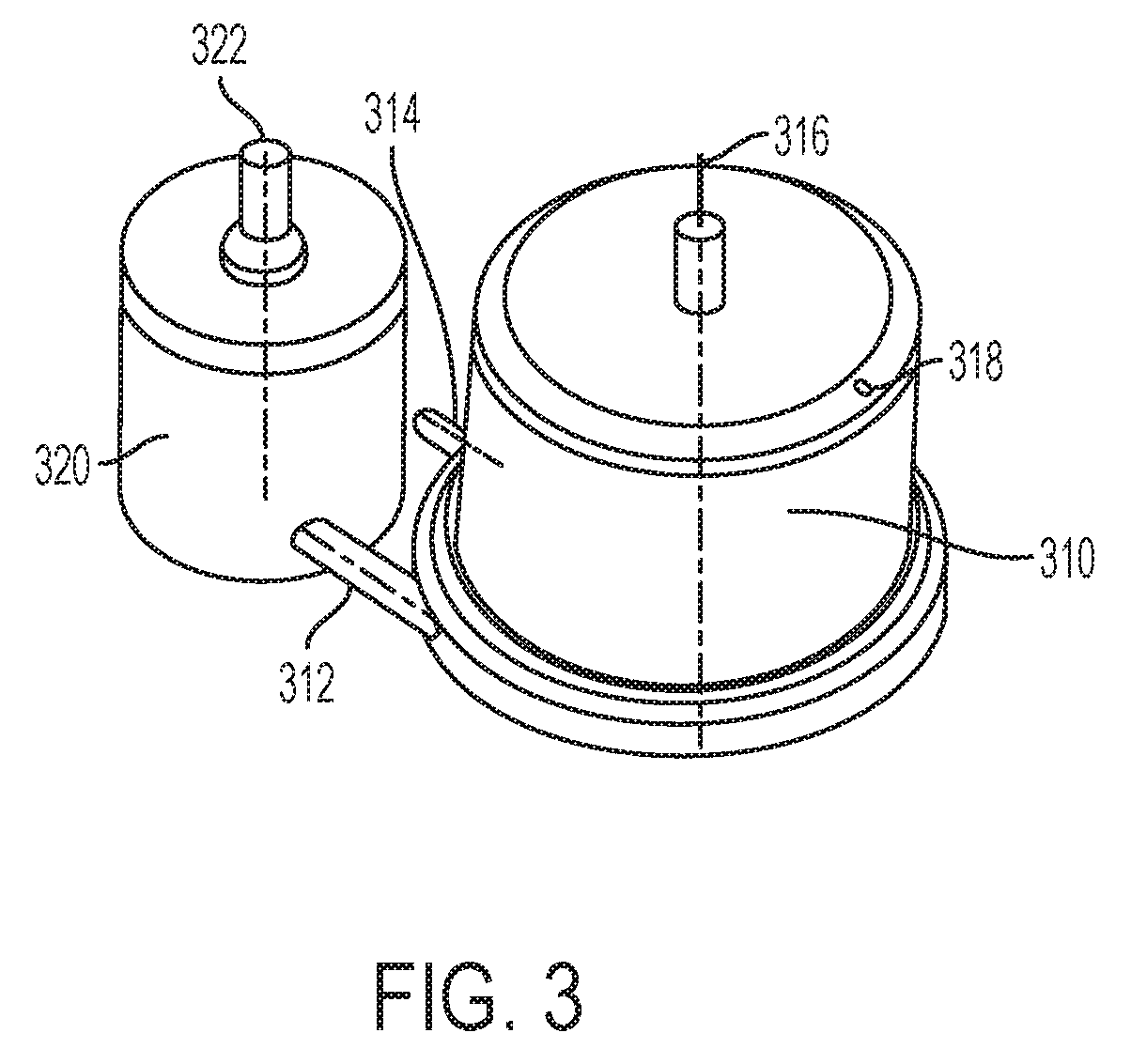Artificial lung system and its methods of use
a technology of artificial lung and oxygenation system, which is applied in the field of systems and methods for oxygenating blood, can solve the problems of reducing patient mobility, affecting patient mobility, and affecting patient mobility, and achieves the effects of reducing the size of the scrubber, reducing the life of the carbon dioxide scrubber, and increasing the battery li
- Summary
- Abstract
- Description
- Claims
- Application Information
AI Technical Summary
Benefits of technology
Problems solved by technology
Method used
Image
Examples
Embodiment Construction
[0036]A method and system are described for the long term mechanical oxygenation of an ambulating patient. In the following description, for the purpose of explanation, numerous specific details are set forth in order to provide a thorough understanding of the present invention. It will be apparent, however, to one skilled in the art that the present invention may be practiced without these specific details. In other instances, well-known structures and devices are shown in block diagram form in order to avoid unnecessarily obscuring the present invention.
[0037]The system of the present invention provides a long-term solution to enable a person in need of blood oxygenation, the ability to no longer be bed ridden. The system comprises a pump oxygenator unit that interfaces with the patient's circulatory system via a multi-lumen cannula. The pump oxygenator unit is capable of oxygenating blood for an extended period of time. A portable supply pack provides the necessary power and oxyg...
PUM
 Login to View More
Login to View More Abstract
Description
Claims
Application Information
 Login to View More
Login to View More - R&D
- Intellectual Property
- Life Sciences
- Materials
- Tech Scout
- Unparalleled Data Quality
- Higher Quality Content
- 60% Fewer Hallucinations
Browse by: Latest US Patents, China's latest patents, Technical Efficacy Thesaurus, Application Domain, Technology Topic, Popular Technical Reports.
© 2025 PatSnap. All rights reserved.Legal|Privacy policy|Modern Slavery Act Transparency Statement|Sitemap|About US| Contact US: help@patsnap.com



